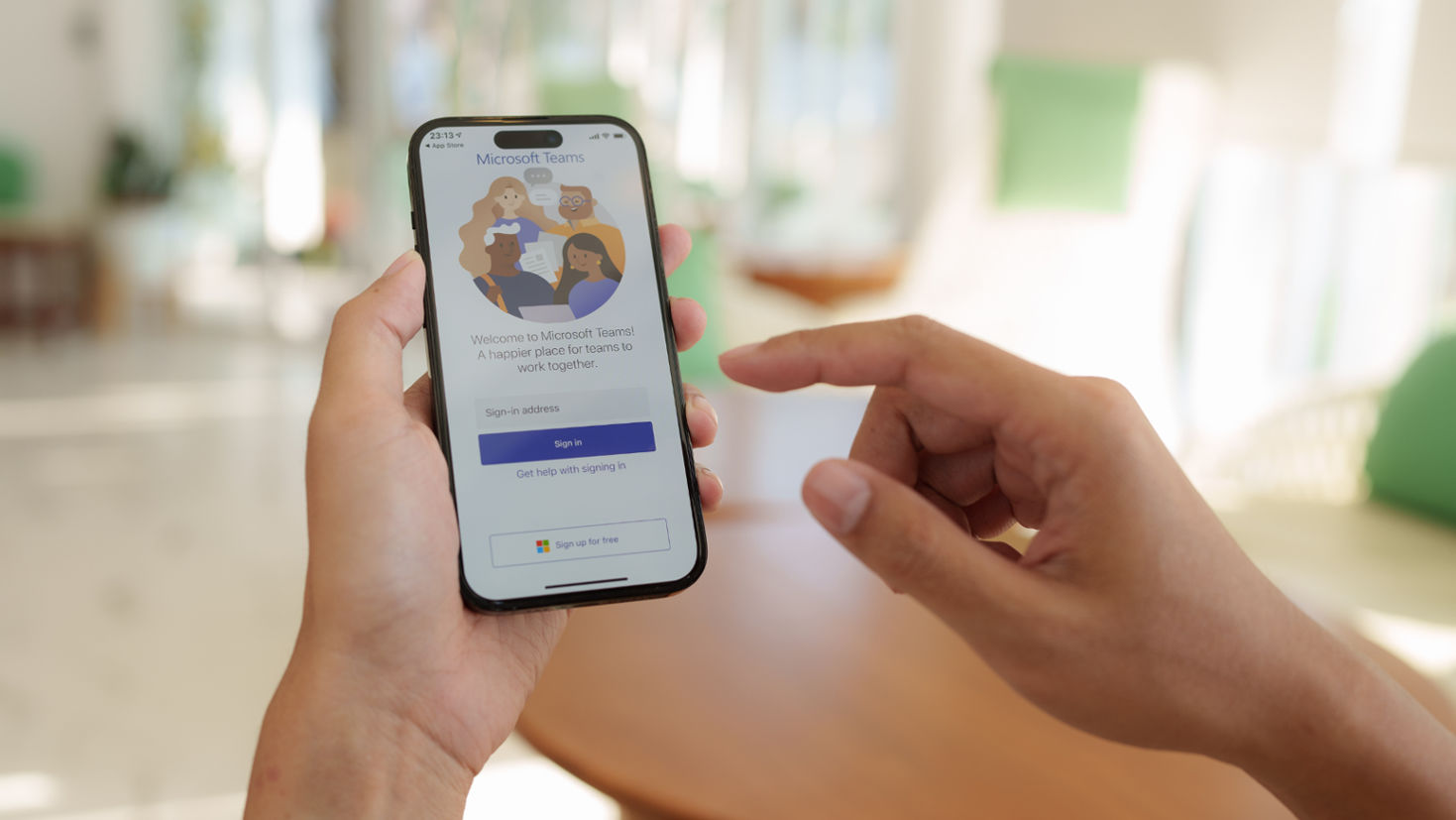What is a modern Voice solution, and how is it beneficial for your company?
An IP Voice (or telephony) solution enables reliable and secure voice calls from anywhere on any device.
IP Voice solutions (often referred to as VoIP) can take several forms. Determining which option is the best fit for a particular organisation will depend on the complexity of its call routing and specific business requirements. However, despite the different platforms and configurations, there are multiple common benefits that any business can take advantage of, no matter which type of voice platform a company chooses.
Moving to an IP Voice solution decouples a phone number from a particular office or location, enabling customer calls to be answered by anyone across an organisation, no matter where they are. This mobility dramatically improves the agility of modern voice services over traditional telephony – enabling a range of efficiency benefits for organisations.
Integration is another significant advantage, which comes from treating voice just like any other IT service. As a result, customer phone calls can be considered more like email – routed, handled and reported on within the IT system. This allows organisations to gain greater visibility into how their customers interact with them and make call routing decisions based on any number of factors (such as someone’s availability status in Outlook), which is not possible when running a standalone telephony solution.
IP voice services typically reduce organisational expenditure on voice service compared to traditional telephony services – calls are less expensive, ‘lines’ are purchased centrally rather than for each branch and number rentals are more cost-effective.
What Voice options are there for businesses?
There are several options in the market for Voice calling. Further to this, technology companies will have different implementation methodologies that can dramatically impact the cost or risk profile of the end solution. Businesses looking for a new Voice solution should talk to a systems integrator like New Era Technology to scope its requirements. The most reliable voice systems are those where the same provider engineers and designs both the underlying network connection and voice services. These components must work in harmony to ensure the chosen solution performs optimally.
When a business transitions to a modern Voice solution, considerations need to be made as to whether the objective is to preserve current call routing processes or to utilise new functionality to streamline approaches. Designing the right solution and managing this change is vital if organisations are to achieve an optional outcome.
Voice options generally fall into two categories
The first option is a more ‘traditional’ IP telephony solution where call routing decisions are handled by a server run by the organisation. The second is a cloud-based approach where telephony services are consumed as a service, delivered from servers operated by a cloud provider such as Microsoft.
New Era can provide a full range of IP Voice services from our own platform over our own network. This service is a more traditional IP telephony platform, featuring rich contact centre functionality, detailed reporting interfaces, call recording, teleservices QA automation, and integration into your existing systems. If your requirements seem complex or even out of reach, talk to us today to start defining your solution.
Equally, suppose you are seeking assistance to migrate to a cloud-based telephony provider such as Microsoft Teams. In that case, we have the skills and expertise to ensure a smooth and successful project and a trouble-free, optimally maintained system. For example, New Era maintains Microsoft certified Session Border Controllers (SBCs) to ensure optimal performance with Microsoft’s platform. In addition, we run all customer voice calls over managed paths to Microsoft’s cloud, and we have a well-trained, experienced team of Microsoft, Voice and Network engineers ready to assist with your Teams migration, no matter the scale.
Teams Voice
Workers across nearly all organisations are increasingly working from home or in the field – operating a Voice solution that aligns with this ‘new normal’ has become an essential part of operating a modern business. It plays a crucial role in enabling a productive workforce where making and taking business calls on any device, anywhere, is easy and connecting with internal colleagues is streamlined no matter everyone’s location. If this is your company’s need, Teams is your solution.
Microsoft Teams Voice is one of the most popular Voice solutions for businesses because it extends the existing Teams chat and conference solution to include a phone system. It is easy to set up, uses existing mobile phones and PCs as endpoints and can be provisioned quickly. As a result, it is fantastic for companies who have an immediate need to get their workforce taking calls when working remote/mobile. The solution offers optimal mobility, call flow simplicity, and businesses can leverage existing devices to make and take calls such as computers, tablets, phones and laptops.
What are the key benefits of Teams?
1. Mobility
One of the most significant advantages of swapping to a cloud-based voice service is mobility. Compared to a traditional phone system, a modern Voice solution is far more portable. Voice solutions allow phone numbers to be accessible between workplaces and the home office. Not only can staff make or receive calls from anywhere via the cloud service, but they can also connect a single phone number to multiple devices. This means that employees have the flexibility to make or receive calls from their smartphone, desk handset, or computer. In addition, allowing employees to be connected means that phone calls are more likely to be answered when customers or partners call.
2. Cost-efficient
Implementing Teams will allow for cost optimisation. As companies move away from the need to purchase expensive hardware, multiple phone lines, and high calling costs associated with traditional phone systems, towards OPEX models that can be scaled as required, they will see actual cost savings.
Tapping into existing IT infrastructure means businesses are not building (and paying for) a completely different solution for voice – instead, it is increasing the capability of existing Microsoft Office 365 subscriptions and its network links to carry voice.
3. Secure and Reliable
At New Era, we design Voice solutions that maintain a high level of reliability and security. We source all our voice links direct from Carriers. All calls (except public cloud network paths) remain on private IP links, and we log every SIP message exchanged over our network for future analysis if necessary. In addition, we design the network to deliver optimal call quality, and we have the tooling in place to pinpoint any issues that occur and resolve them.
How do I get started with a Voice solution?
If you want to swap from a traditional phone system, or wish to review your current set-up to ensure your Teams Voice or other VoIP service is as reliable and secure as possible, please get in touch with our team at New Era Technology.
FAQs About VoIP and SIP
What is a VoIP Phone System?
VoIP stands for Voice over Internet Protocol and refers to the technology to make phone calls through your business’s internet connection instead of a regular landline or mobile network. VoIP Phone Systems can run via a computer or smartphone. On some occasions, you can even make VoIP calls via your broadband or home phone providers.
What is a SIP Phone System?
Does your business still have a traditional phone line? SIP is the underlying technology that enables VOIP calls to be made, but more simply, SIP sessions are the successor of traditional PSTN phone lines.
Can I use a regular phone with VoIP?
If you want to continue using your existing phone hardware and headsets, there are ways to enable your phone to work with VoIP technology.

 Canada
Canada New Zealand
New Zealand UAE
UAE United Kingdom
United Kingdom United States
United States




